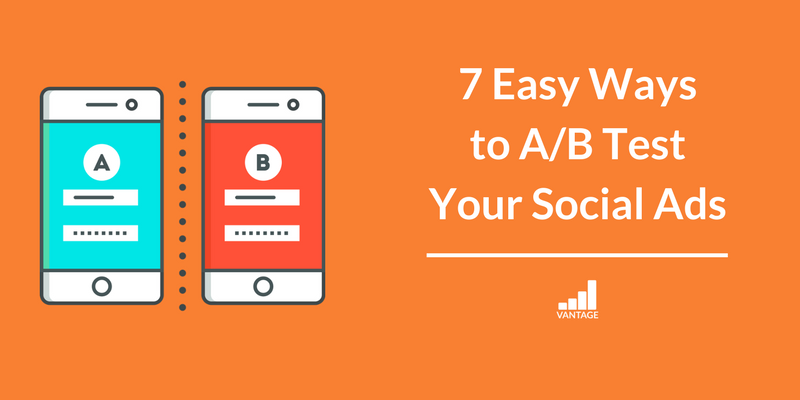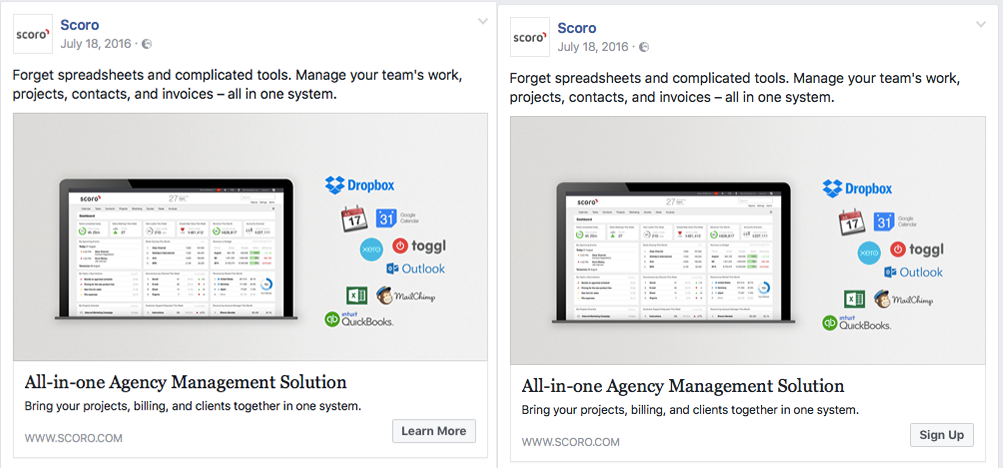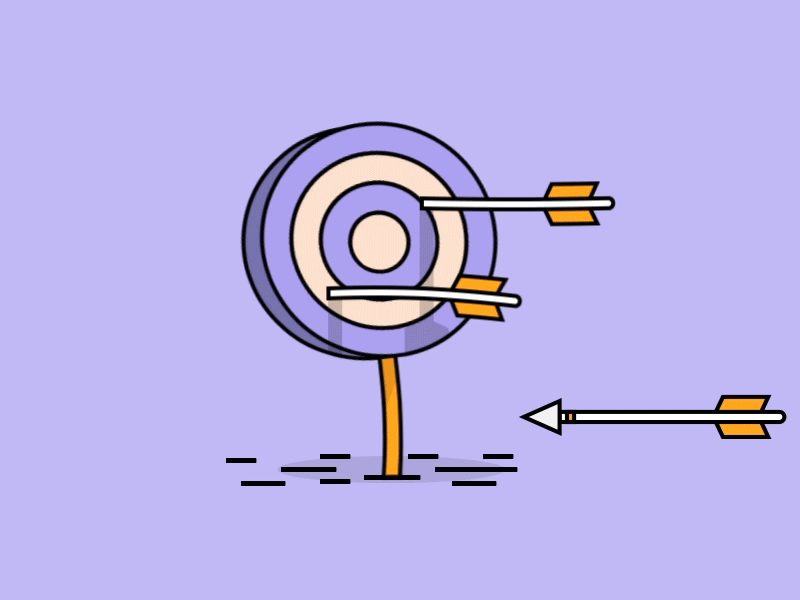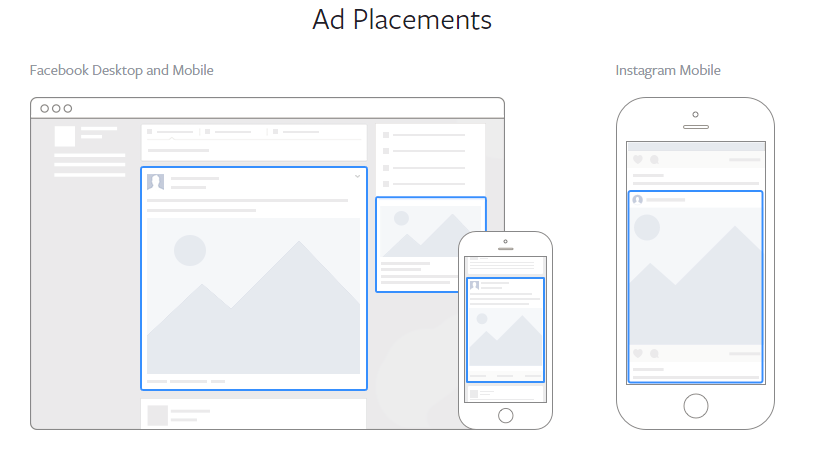
- June 13, 2017
- Vantage
7 Easy Ways to A/B Test Your Social Ads
Social ads are an excellent way to reach a new audience, and if you do it well, you’ll be able to increase traffic, conversions, and best of all – revenue. Out of all the social ads, we’re slightly biased in favor of Facebook and Instagram ads. Why? Easy – it’s because Facebook ads alone have a click-through rate that’s eight times higher than paid search. In order to ensure you’re making the most out of your advertising efforts, it’s integral that you A/B test all your ads to ensure they’re performing optimally.
Let’s start with covering the basics. An A/B test (or split test) is when you run two versions of the same ad simultaneously with one important element having been changed to determine which performs better. There are numerous variables that you can change in your tests, here are some of the most important ones and how to alter them.
1. See Which Images Work Best
Images are arguably one of the most important elements you can A/B test with an ad because they have such a huge influence over engagement. The image you use can make the difference between your best customer being captivated and converting or scrolling right past. A few different factors to take into account when planning your variations include using lifestyle images, wide-angle versus close-up, showing a person with your product, the product by itself – the list goes on! Get the picture?
2. Test Your CTA
The call to action is an integral element in your ad because it guides prospects in terms of what to do next, how do they buy your awesome product. A great ad with a convoluted CTA or missing CTA won’t perform because prospects won’t know what to do with the ad. CTA factors to test include placement, color, wording, and style although with Facebook ads, in particular, your options are more limited. You can either use the CTA button with select options such as Learn More, Shop Now, or you can use the headline or copy to get your tests in.

3. Change Your Targets
Instead of changing elements of the ad itself, you can also run two of the exact same ad but change the targeting for each one. For instance, ad A might be targeted at Facebook users based on location, and ad B might be targeted at users based on interests or maybe you want to target two different interests altogether to uncover what customer interests best complement your brand. Other targeting elements to test include gender, behaviors, age, interests or even a custom audience factor.

4. Add an Offer
Offers and promotions can be a great way to attract prospects, but the only way to know for sure is to test it out. There are lots of variations here, including promo code versus no promo code, type of code, or the type of promo itself. Some popular promotions/offers to try are a certain percentage off, free shipping, and two for one. We have found that ads that use dollar amounts rather than percentages perform best – $10 OFF vs. 10% OFF. Give it a try to see if it works for your business too!

5. Test Your Copy
The copy you use in your social ad can be just as important as the image, and the wrong copy can turn people off, uninspire them or give them the wrong message. And it’s not just the body itself you can test, but also the headline, link description, and the copy of the landing page. When writing your copy, you want to try to embody the tone and personality of the shopper. When it comes to your ad copy, shorter is always better. Don’t be afraid to be playful or a little cheeky, remember you want to capture their attention and draw them in.
Take for example the New York Times ad below. They pose a question that encourages the customer to actually engage and not simply click. Don’t be afraid to get creative with your copy!

6. Ad Type and Placement
Ok, yes, these are often two separate things, but sometimes changing the placement will change the type of ad. For instance, if you launch a Mobile ad it will only be available in New Feed as opposed to on the Right Column (only available on a desktop), so if you change the ad type you change the placement. For ad types where you get to choose the placement, test these variables separately. Do your customers prefer to engage with you on New Feed, Mobile, Instagram or Right Hand – there’s only one way to find out!

7. Can’t Stop, Won’t Stop
Once you start testing your social ads, it’s important that you never stop—if you want to get the most return on ad spend, that is. Consumer habits and behaviors change all the time, and just because ad A performs spectacularly one week doesn’t mean it will the next, so you must keep A/B testing, tracking results, and tweaking your approach accordingly. This will ensure that your ads are always reaching the biggest audience, resonating with the most people, and converting the most strangers into prospects and prospects into customers.







Leave a Reply
You must be logged in to post a comment.